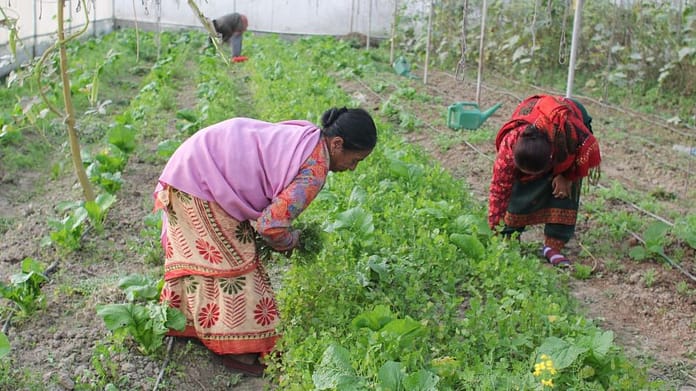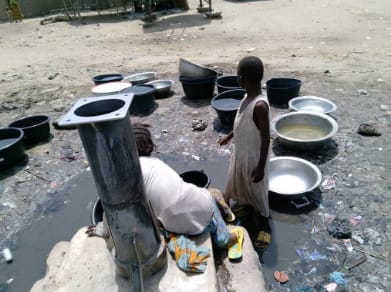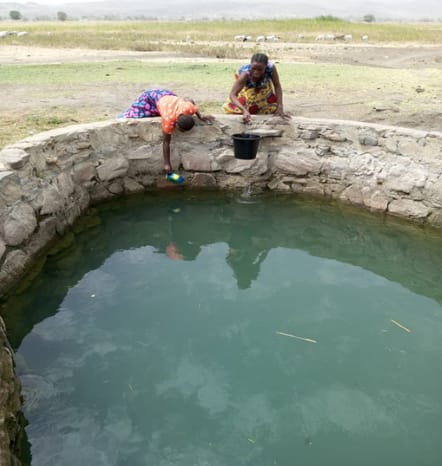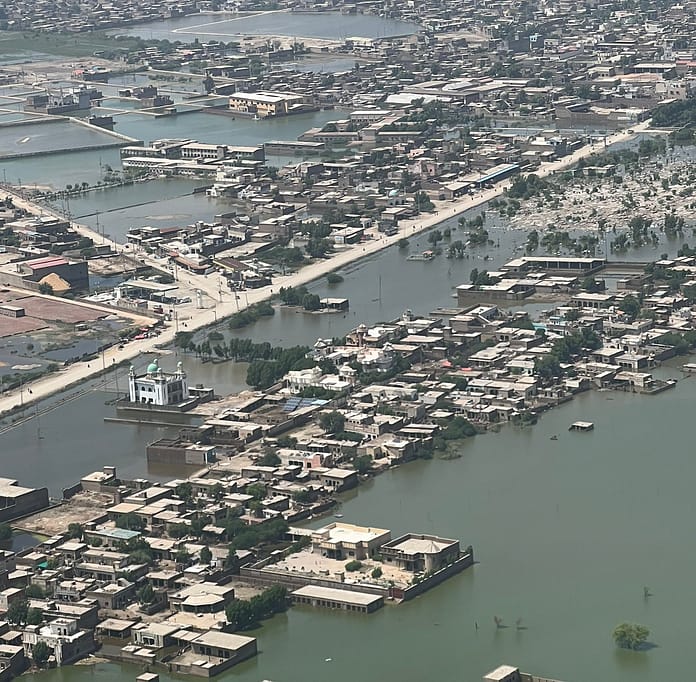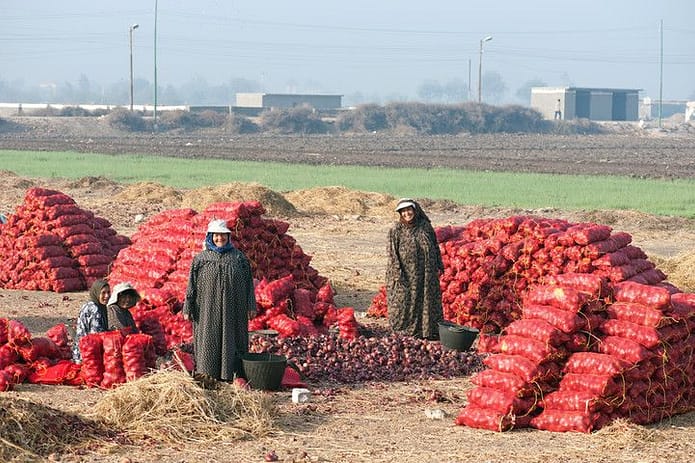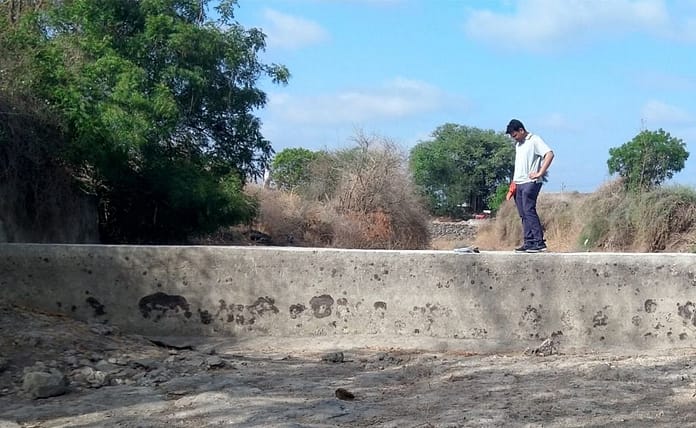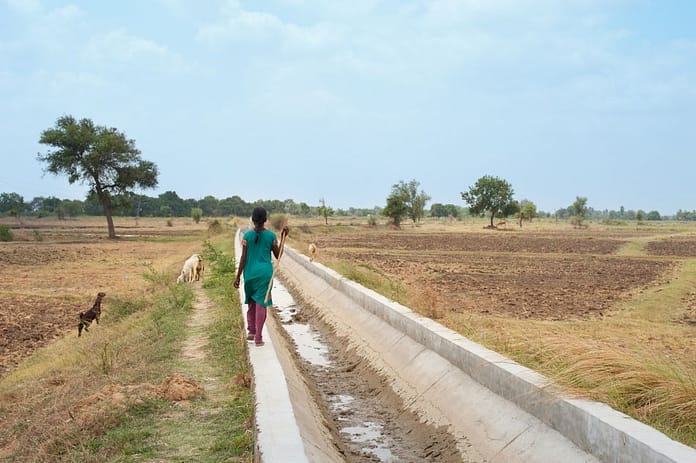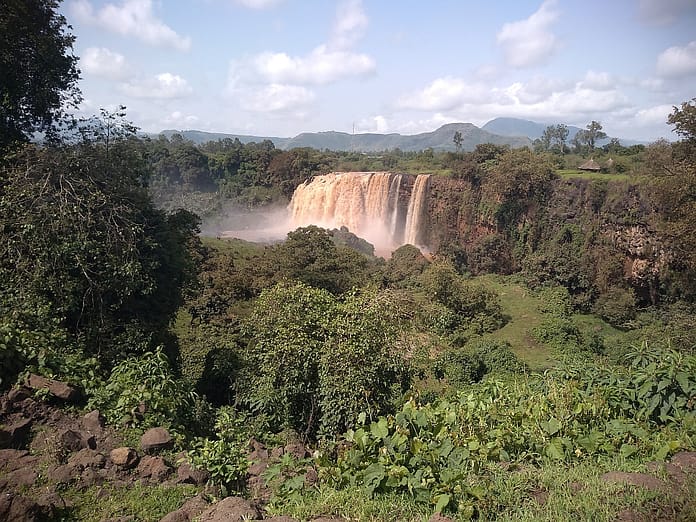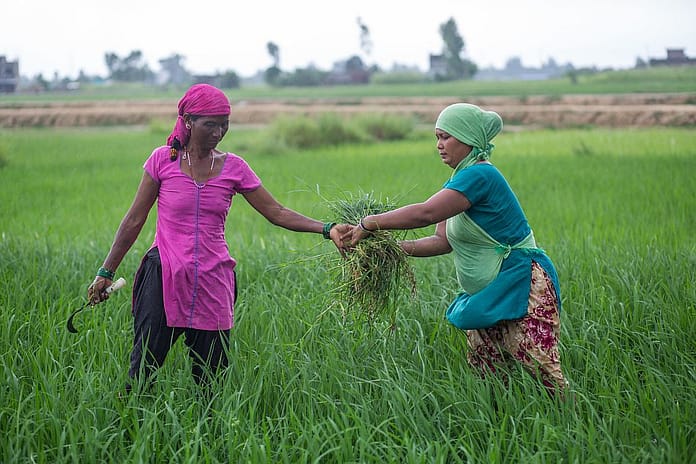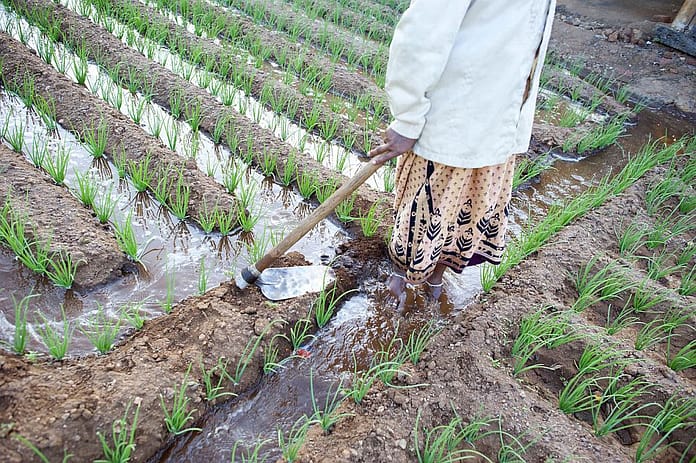By Sandra Ruckstuhl Senior Researcher International Water Management Institute (IWMI) and Merel Laauwen, Consultant, IWMI

Floods, landslides, cyclones, droughts, and heat waves are just a number of rapid and slow-onset disasters that are becoming increasingly prevalent as a result of climate change. The vulnerability of both human and natural systems is increasingly interdependent, leading to heightened risks in many regions. In 2022 alone, disasters triggered over 32 million new internal displacements, which is 41% higher than the average of the previous decade. Of these, 98% were triggered by weather-related hazards, including floods, storms and droughts. To better understand how water management can strengthen climate resilience and foster social inclusion, the CGIAR portfolio has grown to include the Fragility, Conflict and Migration (FCM) Initiative, co-led by the International Water Management Institute (IWMI). Research under FCM’s “Anticipate” Work Package, delves into the concept of anticipatory action as a crucial tool for strengthening disaster and climate preparedness and mitigating the impact of disasters, specifically in fragile settings.
Understanding anticipatory action
Early warning systems, early action, disaster preparedness/response, and anticipatory action (AA) are terms used to refer to different approaches employed in humanitarian and development circles to mitigate the harmful impacts of weather-related hazards. While these terms may have varied nuances, it is essential to bridge them for cohesive research purposes. By doing so, we can enhance disaster preparedness efforts, develop effective response strategies, and inform longer-term climate adaptation strategies.
Why adopt conflict-sensitive approaches to disaster preparedness and climate adaptation?
The humanitarian-development-peace nexus is a framework that seeks to better integrate humanitarian, development, and peacebuilding efforts in crisis-affected contexts. It recognizes the interconnectedness of these three pillars and aims to bridge the gaps between them for more effective and sustainable outcomes in fragile and conflict-affected settings. The aim is to create a more holistic and coordinated response to crises, ultimately contributing to peace, resilience, and sustainable development in affected regions; in an evolving effort to shift toward more joined-up thinking and action in the field of humanitarian and development assistance.
AA can play a pivotal role in strengthening disaster preparedness and adaptation within this framework. By adopting conflict-sensitive approaches, we can ensure that AA contributes to peacebuilding and conflict prevention efforts. Researchers within the FCM Initiative are examining the complex impacts of meteorological disasters, displacement, migration, and pressures on food, land, and water systems in fragile and conflict-affected contexts. Specifically, IWMI teams have developed a global literature review on AA in Fragile and Conflict-Affected States with a focus on the impacts on refugee host communities. This year, these teams are performing in-depth field research in host communities across Jordan, Pakistan, Ethiopia and Nigeria. The team is also conducting forensic analysis of disaster events and response efforts to understand how AA can strengthen future responses in Zambia and Pakistan. Throughout these research activities, the Red Cross / Red Crescent Climate Centre will be a strategic partner working with IWMI to leverage their knowledge and experience in AA.
Identifying priorities for anticipatory action
Extensive consultation, research and literature have shed light on key priorities for AA in fragile settings. The urgency expressed in these findings emphasizes the importance of four areas of action, which are embedded in the FCM work program:
- Defining vulnerability: Building robust early warning systems is crucial to providing timely and accurate information to vulnerable communities. Enhancing the availability, accessibility, and reliability of early warning systems is a top priority. However, this requires a thorough understanding of vulnerability in exposed communities. These vulnerabilities are the key to triggering early action that effectively preempts the impact of an impending crisis event, and they are the key to guiding resilience and long-term adaptation investments. Vulnerability and exposure are especially difficult to quantify and qualify in fragile and conflict-affected situations and contexts affected by high levels of displacement. Robust case study research is required to fill this knowledge gap and promote the development of practical AA solutions.
- Enhancing coordination: Strengthening coordination and promoting information sharing among multiple stakeholders, including government agencies, non-governmental organizations, and communities, is essential for successful AA. In this, governments should play a critical role to ensure that coordination mechanisms are embedded in regulatory and policy institutions, including climate and disaster risk management policy, wherever possible.
- Building institutional capacities: Fragile settings often lack the necessary institutional capacities to implement AA effectively. Investing in capacity-building programs and empowering local institutions can contribute to more resilient communities. Disaster governance should consider the transition towards a ‘locally-led’ philosophy. Data ownership is a central issue when it comes to AA; if local institutions can hold their data locally, they are most empowered to plan and act. This becomes a more difficult issue when data ownership leaves this local area.
- Accessing sustainable climate finance: Adequate and sustainable funding is paramount for successful AA. Innovative financing models, such as crisis modifiers, can enable agencies to respond swiftly to crises while still addressing long-term resilience-building initiatives. These investments must also be embedded within a climate adaptation strategy. However, it should be noted that conflict-affected countries, until now, have significantly smaller climate finance portfolios – a gap that required urgent attention to reduce humanitarian costs over the longer term.
- Integrating AA into development plans: As climate change and weather extremes are becoming more severe, traditional long-term disaster risk reduction strategies too must evolve to maintain their effectiveness. As a result, AA should be an integral part of development policies and practices, focusing on climate adaptation. By incorporating AA into broader development frameworks, leveraging the principles of HDP nexus, we can ensure a holistic approach that addresses both immediate and long-term challenges.
As climate-related disasters continue to intensify, leading to compound crises in situations affected by conflict, fragility and migration, it is imperative to adjust disaster preparedness and adaptation strategies to address these complexities. AA provides a proactive approach to address these challenges, emphasizing the importance of early warning, early action, coordinated responses and the longer-term objective of building resilience on a systems level. By identifying key priorities, addressing financing challenges, and integrating AA into the HDP nexus, we can enhance disaster preparedness, disaster risk management and build resilience among vulnerable populations in fragile and conflict-affected situations. The ongoing research conducted by the FCM initiative contributes to this endeavor, fostering a deeper understanding of the complexities involved and paving the way for effective conflict-sensitive AA strategies worldwide.
This research is being carried out by the CGIAR initiative on Fragility, Conflict and Migration.
For more information on this work contact: Sandra Ruckstuhl (Initiative Co-Lead): s.ruckstuhl [at] cgiar.org


